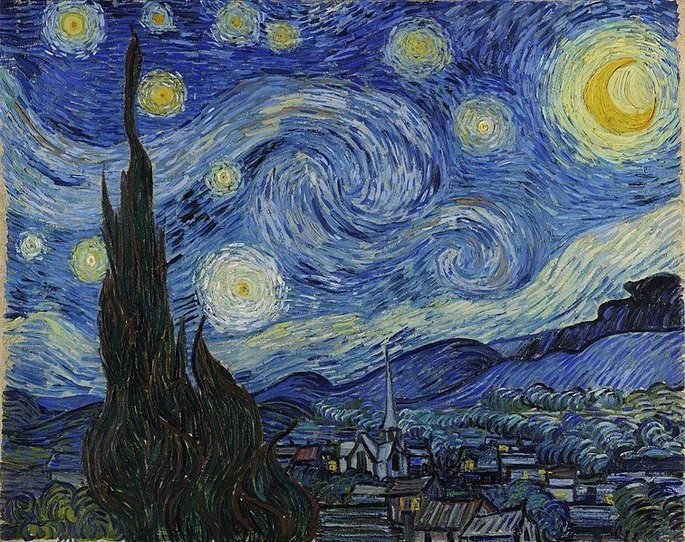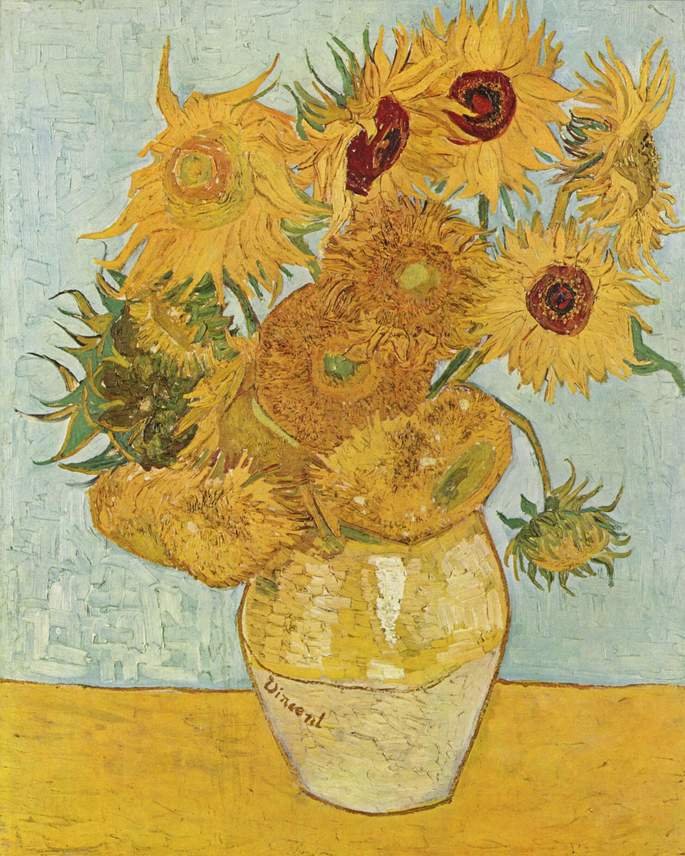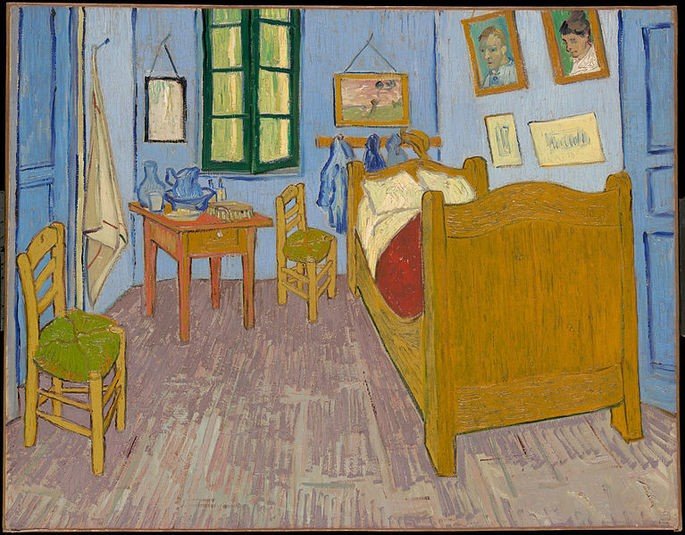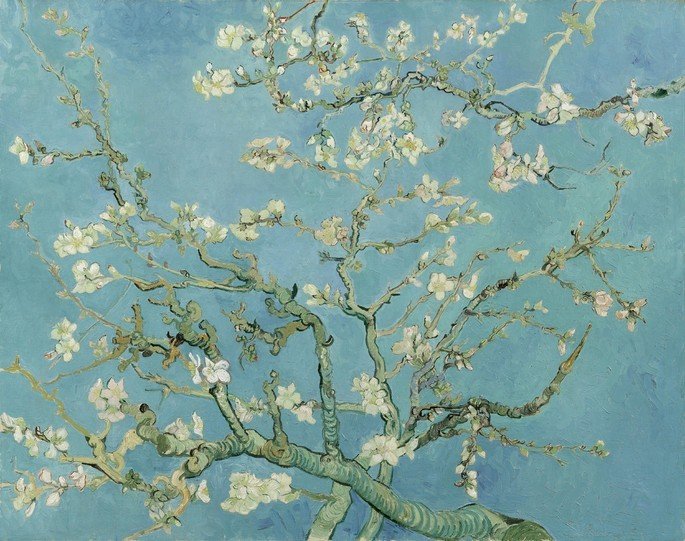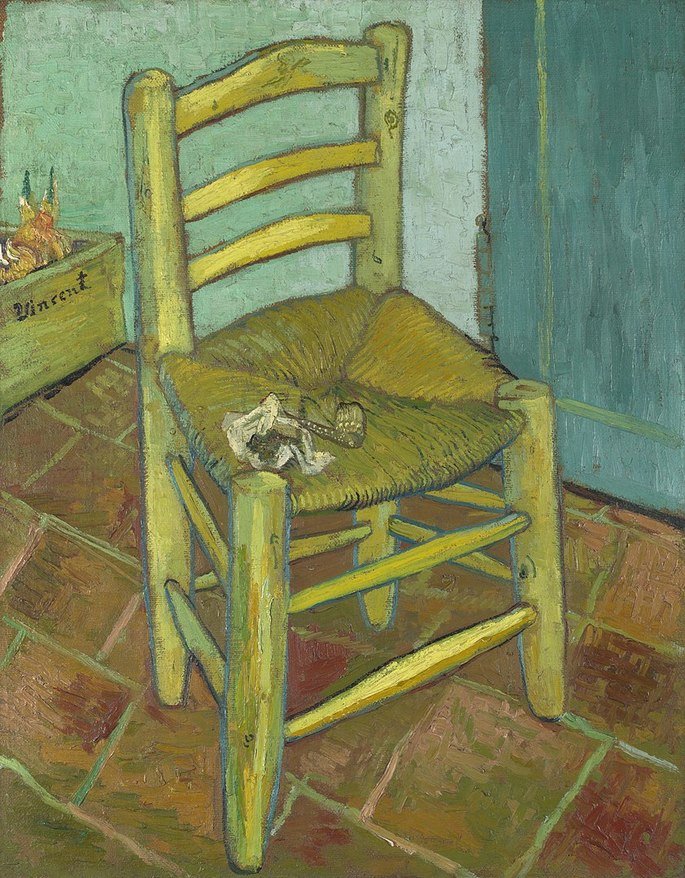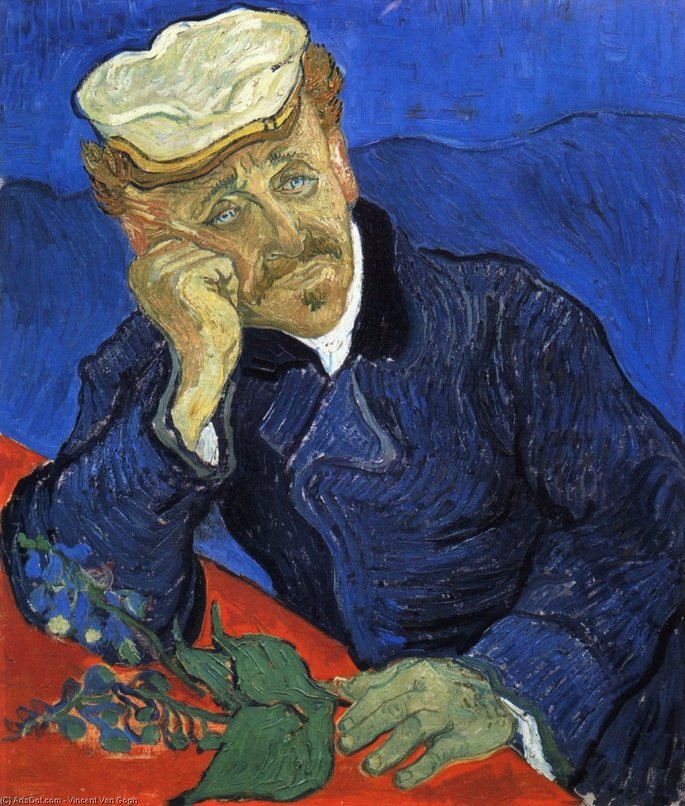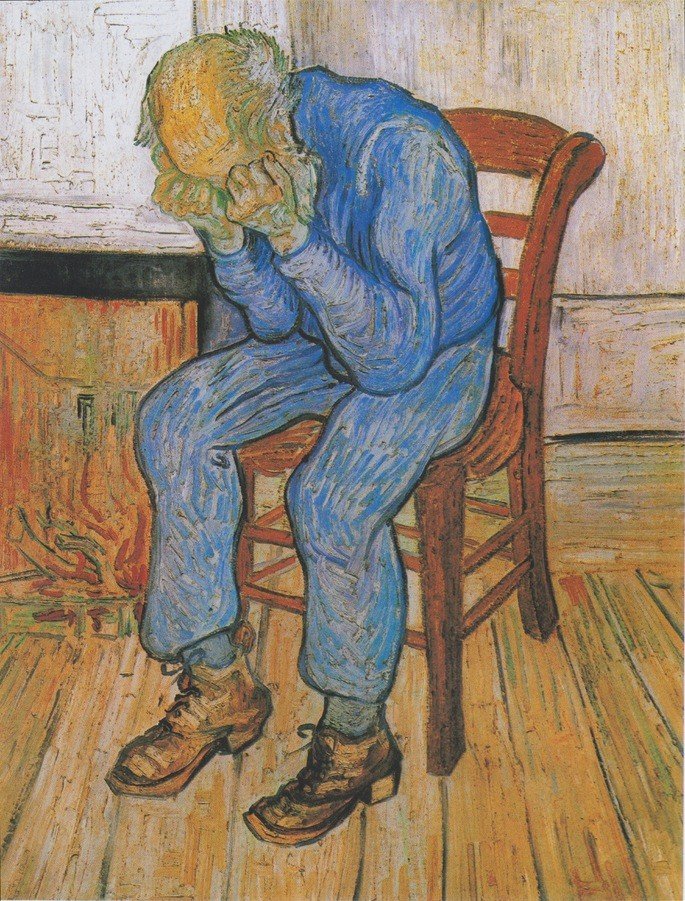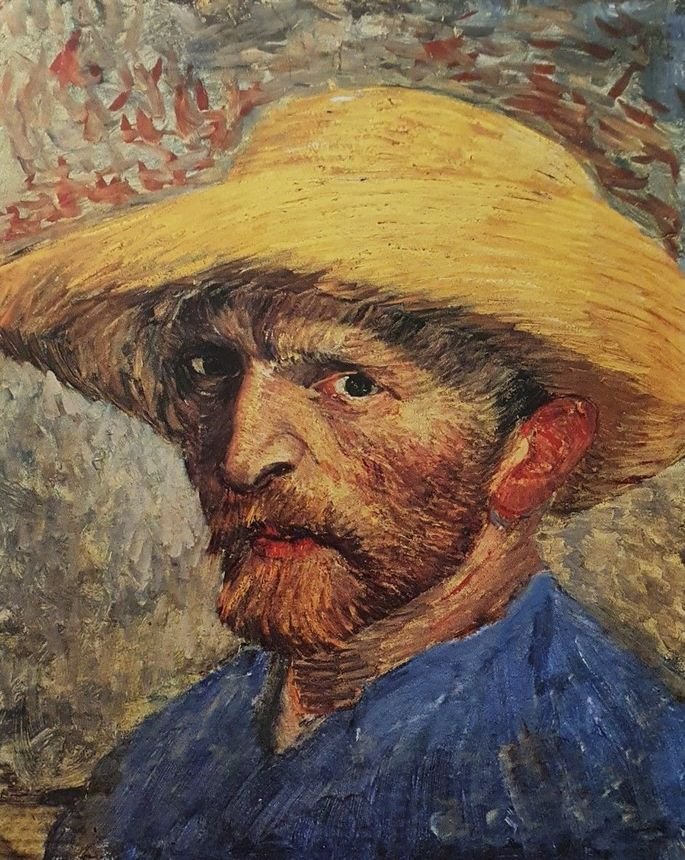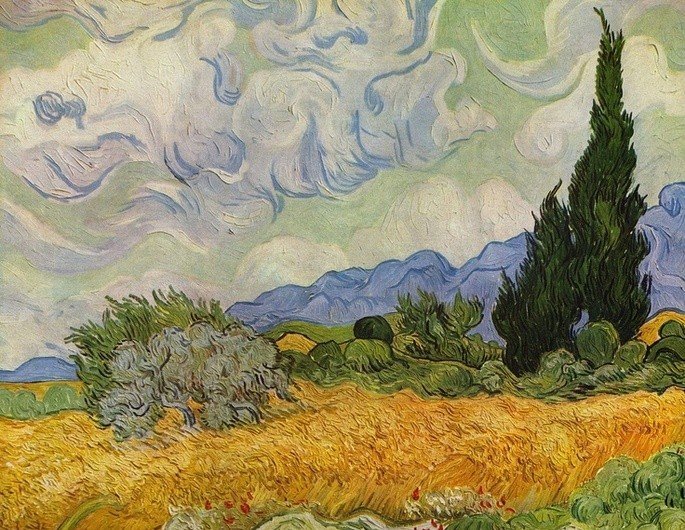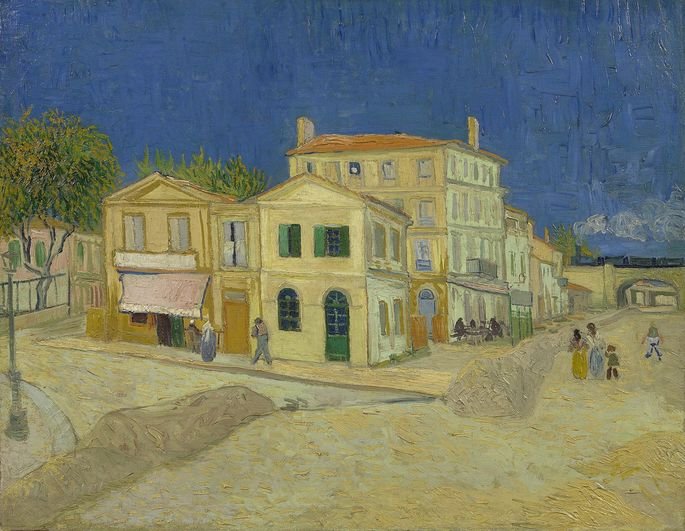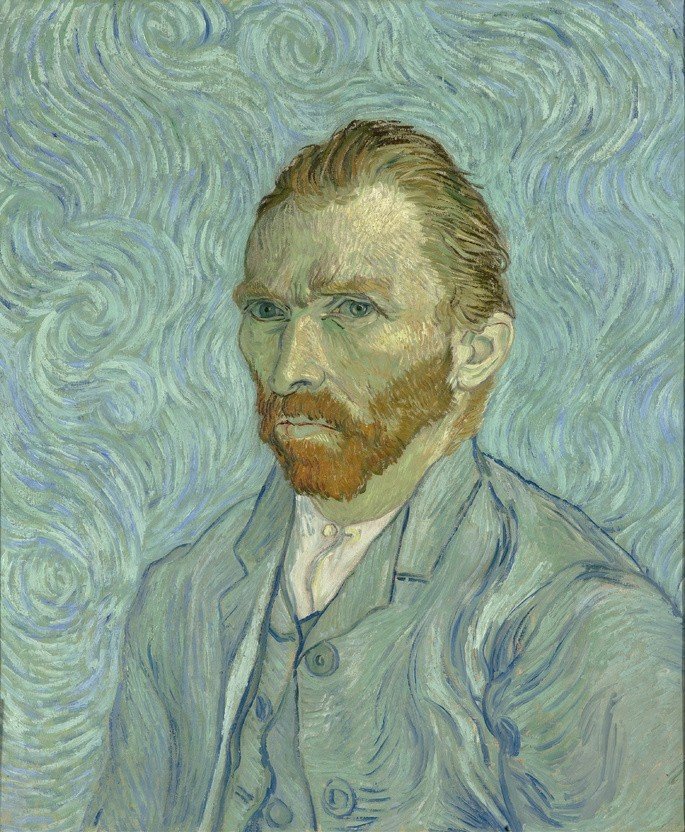
15 main works of Van Gogh
Vincent van Gogh (1853-1890) was a genius of post-impressionism despite the fact that, in life, he sold a single painting.
Considered one of the most important creators of Western plastic arts, his canvases became painting classics and are part of the collective imagination. He gets to know these masterpieces better and learn more about the biography of the Dutch painter.
The Starry Night (1889)
The most famous painting by the Dutch painter was created while Van Gogh was interned in the psychiatric hospital of Saint-Rémy-de-Provence during the year 1889.
Vincent had asked his younger brother, Theo, to commit him after a series of psychotic episodes. The health problem that affected the artist is not exactly confirmed, but bipolar disorder and deep depression are suspected.
The canvas above illustrates the sunrise seen from the bedroom window where Van Gogh slept. The work features some peculiar elements such as the spirals in the sky that convey a sense of depth and movement. Despite the chaotic sky, the village that appears in the painting has a peaceful air, oblivious to the turmoil outside.
The Sunflowers (1889)
One of the Dutch painter's masterpieces, the canvas featuring a vase of sunflowers has ten versions.
In the image we see the preponderance of yellow and an unconventional organization of the flowers. The Dutchman's painting presents confusion, chaos and a disturbing beauty obtained with the twisted sunflowers.
The canvas was a greeting made to his friend Paul Gauguin (1848-1903), who visited him in Arles, where Vincent was living. Upon seeing the images, Gauguin praised his Dutch colleague by stating that his sunflowers were more beautiful than Monet's water lilies.
In the frame, the signature is not as we usually find it, positioned in the corner of the canvas. In Os girassóis, the first name of the painter is inserted inside the vase, in the middle of the frame (at the bottom). In a letter to his brother Theo we learned that he chose to sign Vincent because people had difficulty pronouncing Van Gogh.
The Potato Eaters (1885)
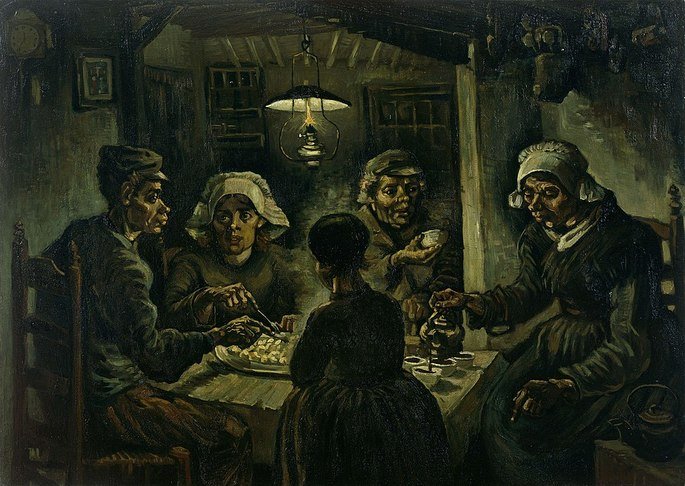
The Potato Eaters painting illustrates the time for dinner, at seven in the evening (marked on the hand clock located on the wall to the left of the painting). On the same wall in the room where the clock is located, there is also a religious image, which gives us more clues about this family.
The table is made up of men and women who work the land. The hands (strong, bony) and faces (tired, calloused by effort) are the protagonists of the canvas. Van Gogh intended to portray them as they were, making a record of domestic life.
What is in the center of the table - dinner - are potatoes (hence the name of the canvas). The entire frame is painted in the tone of the earth's color and the image contrasts light and dark (notice how the light in the foreground illuminates the dining table while the background remains dark).
The painting is considered by many to be Van Gogh's first masterpiece and was done when the artist was still living with his parents. It is also said that the canvas was made under the inspiration of the works of Rembrandt, one of the greatest Dutch painters.
The Room (1888)
The painting above is a record of the room that Van Gogh rented in Arles. In the image we see details of the painter's life such as the wooden furniture and the canvases hanging on the walls.
Van Gogh makes use of strong and contrasting colors in the work and, through it, we perceive a little of his daily life. It is curious that there are two chairs and two pillows when it is known that Vincent lived alone.
There are suspicions that the painting would have been made for his brother, Theo, in order to comfort him so that he knew that Van Gogh was well.
Self-portrait with a cropped ear (1889)
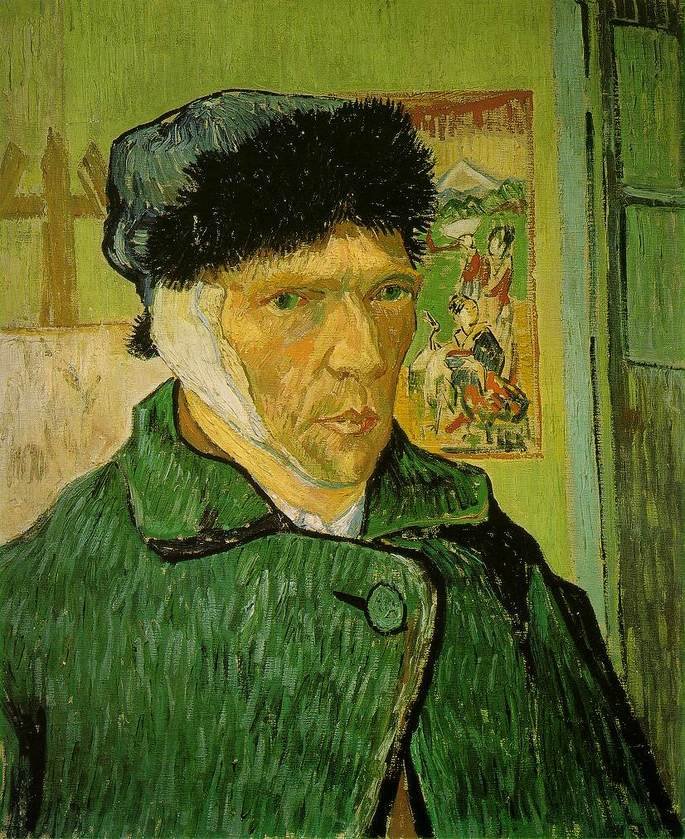
The amputation of the right ear was a nebulous episode in the painter's life that still remains mysterious. We only know that the loss of the ear was the direct result of a violent argument he had with his friend, fellow painter Paul Gauguin, in 1888. Gauguin had moved to Van Gogh's artistic residence in the same year, at his friend's invitation.
We don't know if Van Gogh would have cut off part of his right ear in an episode of self-mutilation after having lost control with his friend or if he had been hit with a razor by Paul during the heated argument he had.
The information that is effectively known is that the painter would have kept the severed ear, showing it to a prostitute named Rachel in a brothel in the region. After that encounter, Vincent reportedly walked to his room where he slept on the bloodied bed.
Cafe Terrace at Night (1888)
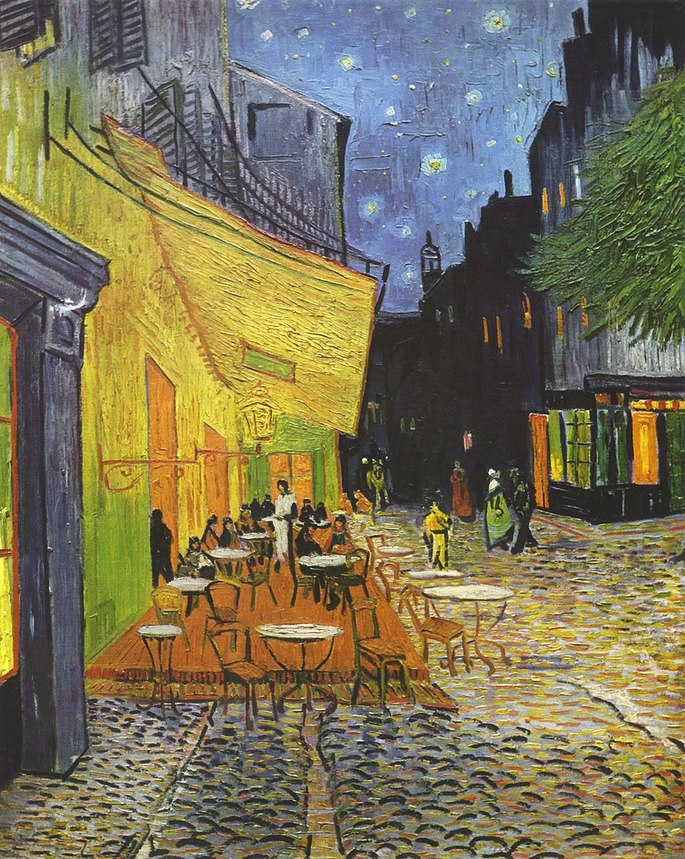
The terrace to which the canvas refers was located on the Place du Forum, in Arles, the city where Van Gogh moved to dedicate himself to painting. According to records, the painter decided to recreate the landscape of the cafe after finishing reading a novel by Guy Maupassant.
One of the most impressive features of the work is that, despite depicting a nocturnal landscape, Van Gogh did not use any black paint, having resorted only to darker tones. In a letter exchanged with his brother, the painter stated:
Here is a night painting without using black ink, just wonderful blues, violets and greens
On canvas we see the first time Van Gogh experimented with painting the sky with post-impressionist stars.
The painting is one of the few not signed by the painter, however, there is no doubt of its authorship thanks to the style presented and Van Gogh's letters, where he referred to the painting.
Wheat Field with Crows (1890)
Painted shortly before Van Gogh died (on July 29, 1890), the canvas Wheat Field with Crows was created on July 10, 1890.
Until recently it was thought that this was the artist's final painting, however researchers at the painter's museum in Amsterdam discovered a later painting, Roots of trees, but which was never completed.
Many theorists read in Wheat Field with Crows the atmosphere of depression and loneliness experienced by the Dutch painter, who suffered from mental disorders throughout his life.
Almond tree in bloom (1890)
Van Gogh was very close to his younger brother Theo, who was newly married to Johanna. And Almond tree in bloom was painted in 1890, when the couple had a child. The painting was a gift offered by Van Gogh to the couple for the baby and was supposed to hang over the crib. Johanna, however, liked the painting so much that she hung it in the living room.
Painted in light colors and pastel tones, the canvas presents a curious angle, as if the viewer were looking at the almond tree underneath. The flowering trunks represent precisely this idea of rebirth.
A curiosity: the name given to the baby, who was born on January 31, 1890, was Vincent, in honor of his painter uncle. It was this only nephew who created the Van Gogh Museum in 1973 in Amsterdam, in partnership with the Dutch government.
Van Gogh's chair with a pipe (1888)
Van Gogh's chair with a pipe was painted in the artistic residence where Van Gogh lived in Arles and features a very simple chair, made of wood, without arms and covered in straw resting on a floor that is also simple.
The canvas is a counterpoint to another painting that the painter made called Gauguin's chair, which is in the Van Gogh Museum. In this second painting there is a more imposing chair, since Gauguin was considered an important painter of the time. Van Gogh's chair painting was paired with Gauguin's chair painting, one should be next to the other (one chair was turned to the right and the other to the left, inclusive).
The canvas where Van Gogh painted his own chair is all in yellow tones and represents his simple personality, while Gauguin's has a more elegant atmosphere.
His (Vincent) signature is found in an unusual space in the middle of the frame (at the bottom).
The Postman: Joseph Roulin (1888)
In Arles, one of the best friends of the painter Van Gogh was the local postman Joseph Roulin.
Joseph worked at the small town's post office and Van Gogh often went there to send paintings and letters to his brother Theo. It was from these recurrent encounters that a friendship emerged – and this was one of a series of portraits that the painter made of his friend and his family during the time he lived in Arles.
There were around 20 portraits of the postman, his wife Augustine and the couple's three children (Armand, Camille and Marcelle).
In a letter sent to Theo, we witness the moment of creation of this specific screen:
I am now working with another model, a postman with a blue uniform, with golden details, a big beard on his face, similar to Sócrates.
Dr. Gachet (1890)
This 68 x 57 cm work is now in the Orsay Museum in Paris and depicts Paul Gauchet, the doctor who cared for Van Gogh after his arrival in Auvers.
The doctor was a lover of the arts and used to buy works and interact with other artists. The connection between the two was, at first, intense. But then they fell out and Vincent wrote to his brother:
I think I should no longer count on Dr. Gachet. First of all, he's sicker than I am, or at least as sick as I am. so there's nothing more to talk about. When the blind lead the blind, don't they both fall into the ditch?"
The canvas was produced after two weeks that doctor and patient met and the artist sought to portray, as he said, "the distressing expression of our time".
Old Man with His Head in His Hands (At Eternity's Gate) (1890)
Based on a drawing and lithographs that the artist had made years before, in 1882, this painting depicts a man in distress with his hands to his face.
The work was completed a few months before Vincent's death and is yet another indication that the artist was going through conflicts and serious psychic suffering, but still had a belief in God and a "portal of eternity", as the work is called.
About the drawing and lithographs he made of this theme, he said at the time:
Today and yesterday I drew two pictures of an old man with his elbows on his knees and his head in his hands. (...) What a beautiful sight makes an old workman, in his corduroy suit patched with a bald head.
Self-portrait with a Straw Hat (1887)
The oil on canvas Self-Portrait with a Straw Hat is a small painting, 35 x 27 cm.
In it, the artist chose to use shades of yellow to represent himself in a posture where he faces the public with a firm gaze, but also conveying anxiety, as he would soon move to the south of France to spend a season.
This is one of the 27 self-portraits by the painter and, about this type of production, he said:
I would like to paint portraits that, a hundred years from now, would appear as a revelation (...) not for photographic fidelity, but rather (...) for valuing our knowledge and our present taste in color, as a means of expression and exaltation of the character.
Wheat Field with Cypresses (1889)
One of Vincent van Gogh's favorite subjects was the depiction of cypresses. Resembling flames in the sky, these twisted trees caught the attention of the artist, who produced vigorous and picturesque canvases.
I would like to make the cypresses like the canvases for the sunflowers, because it surprises me that no one has made them the way I see them.
This oil on canvas measures 75.5 x 91.5 cm and is now in a gallery in Great Britain.
The Yellow House (1888)
The painting above, created in September 1888, depicts the house where the painter lived when he left Paris. The creator rented a room in the yellow house in May of the same year he painted the painting. The building where he resided was situated in a block near Lamartine square in Arles.
In the house, Van Gogh lived and worked with other artists in a kind of colony, experiencing a collective experience, although each one had his own room.
The city chosen by the painter was 16 hours from Paris by train. At the bottom of the screen, on the right side, one can see the presence of an element that may represent the possibility of escape (a viaduct with the train above).
The yellow house is marked by loose brushstrokes, the canvas is also known for the contrast between the blue of the sky and the yellow of the houses. The image gives prominence not only to the house where the painter lived, but also to the city block and air.
A brief biography of Vincent van Gogh
The painter was born on March 30, 1853 in Zundert, a small village located in the south of Holland.
His father, Theodorus van Gogh, was a Calvinist minister-Vincent would also try to follow his father's religious path but to no avail.
His mother, Anna Carbentus, was a housewife and had lost an infant son named Vincent. With the new pregnancy, she chose to name the child she had lost to the new child that would be born. Coincidentally, Vincent was born on the same day as his brother, the following year.
Vincent dropped out of school between the ages of 14 and 15 and got his first job at his uncle's company, who was a dealer. Then he went to work in London teaching a Sunday school trying to be a preacher.
Back in Holland, he tries to follow theology with great difficulty. He ends up with the position of pastor of a small, very poor community in Belgium. After some time in office, he decided to leave the community to dedicate himself to art full-time.
When I feel a terrible need for religion, I go out at night to paint the stars.
Van Gogh was supported throughout his life by Theo, his younger brother, who was a great friend and supporter. Letters exchanged between the two provide us with clues to what the painter's life would have been like.
The artist, who would go on to become one of the biggest names in post-impressionism, had a short life. Van Gogh died aged 37 (suicide is suspected) and produced 900 paintings - having sold only one in life.

